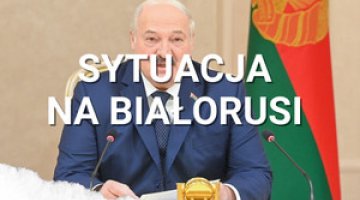Are reforms unavoidable? Belarus’s economy facing a reduction of subsidies from Russia

2018 brought a continuation of the economic growth in Belarus which started in 2017 and which followed a period of recession that had lasted several years. This does not equate to a genuine improvement in the condition of the Belarusian economy, which is still based on ineffective methods of planning and management dating back to Soviet times. Independent Belarusian economists and foreign experts agree that Belarus is currently stuck in a low-growth trap of around 2–3% annually, which prevents it from catching up with other countries of the region. In addition, Belarus’s economic situation is aggravated by the fact that, since mid-2018, Russia has been increasing the rate at which it is reducing its subsidies. These subsidies are among the main drivers of economic growth and form the precondition of the stability of the Belarusian economy as a whole. Moscow is making its continued support for Belarus conditional on Minsk’s readiness to engage in genuine integration under the Union State of Russia and Belarus, which has formally been in place since 1999. As a consequence, President Alyaksandr Lukashenka is now facing the challenge of either maintaining Belarus’s independence from Russia or losing at least a portion of Russian subsidies that currently account for 10% of Belarus’s GDP. An economic overhaul could be an alternative to the support Minsk receives from Moscow. However, the reforms implemented so far are limited and relate mainly to the IT sector as well as small and medium-sized companies. Fearing an excessive weakening of his system of power, in particular in the context of the upcoming presidential election, Lukashenka will continue to block more decisive actions, including the privatisation or closing of selected unprofitable state-controlled industrial plants. This means that Minsk will need to seek an agreement with Moscow despite the latter stepping up its demands. The price of this agreement will be Belarus’s increasing dependence of Russia.
An illusory improvement in economic indicators
In 2018, the Belarusian economy continued to grow. The country’s GDP increased by 3% (compared with 2.5% in 2017), which was possible mainly due to the 5.7% boost in industrial production[1]. In the same period, a decline of almost 40% was recorded in the profit earned by Belarusian companies and the proportion of unprofitable companies was 15%, including mainly state-controlled industrial plants[2]. At the same time, an increase in the stock of unsold goods was recorded – on 1 January 2019 it was worth around US$ 2 billion[3]. The amount of overdue payments between companies also remains high; at present it is nearing US$ 4 billion. The low level of solvency of Belarusian companies mainly results from a deficit of funds. In 2018, as many as 42% of companies reported that they struggled with this problem and a third of them operated based only on loans. Both the cost and the availability of loans are a major problem for many Belarusian companies[4]. All these factors confirm that the Belarusian economy is characterised by low competitiveness and is still based on the Soviet-type command economy model.
The government was unable to reduce the country’s debt and limited itself to refinancing it, which in turn resulted in a 30% increase in the cost of servicing the debt.
As in previous years, the policy pursued by the central bank has been the factor that stabilised the macroeconomic situation. The bank’s consistent financial policy has made it possible to maintain a low level of inflation; in 2018 it was 5.6%. The volume of currency reserves remains relatively high, i.e. around US$ 7 billion (in 2018 the central bank’s reserves decreased by a mere 2.2%)[5]. In 2018, foreign debt also remained stable – it was around US$ 16–17 billion (or 28% of Belarus’s GDP). On the one hand, this should be viewed as proof of efficiency of the central bank’s policy because it prevented external liabilities from increasing further. However, the Belarusian government was unable to reduce the country’s debt and limited itself to refinancing it, which in turn resulted in a surge in the cost of servicing the debt. Due to Lukashenka’s reluctance to implement economic reforms, in recent years Belarus was unable to take out a low-interest stabilisation loan from the IMF and is now forced to use more expensive debt instruments (for example to issue bonds with a yield of 6–7%) and to seek politically motivated loans from Russia. As a consequence, in 2019 as much as US$ 1.1 billion out of a total foreign debt of US$ 2.7 billion will be spent on servicing debt (an increase of 30% as compared with 2018)[6]. According to the latest forecasts, over the next three years as much as a third of the total foreign currency debt (worth US$ 12 billion) will be spent on servicing this debt.
The situation in foreign trade, which accounts for 50% of Belarus’s GDP and is of strategic importance for the state’s functioning, is also difficult. In 2018, a negative trade balance of US$ 4.6 billion was recorded (as compared with 2017, which showed an improvement of around US$ 300 million). Over the same period, a rapid decline in Belarus’s trade deficit with Russia was registered – it stood at US$ 9.6 billion in 2018 (as compared with US$ 6.7 billion in 2017). This was the worst result since 2012 and if it continues it may pose a serious threat to the stability of Belarus’s balance of payments.
Positive figures were recorded for Belarus’s trade with the EU. In 2018, the traditionally positive trade balance with EU countries rose almost three-fold as compared with 2017, to reach US$ 3 billion. This major increase was caused by favourable prices on the market of petroleum products that are Belarus’s basic exports sold mainly to EU markets (in particular the United Kingdom and the Netherlands). In 2018, the value of exports in this category rose by 22.3% to US$ 6.4 billion (which accounted for 60% of Belarus’s exports to the EU). A favourable price situation was also recorded in the production of potassium fertilisers. The value of this sector’s exports in 2018 rose by 20% to US$ 2.7 billion[7].
The increasing rate of the reduction of subsidies from Russia has become the main threat to the stability of the Belarusian economy.
As in previous years, other major sources of export revenue included the food industry (US$ 5.2 billion) and the armaments industry (US$ 1 billion). Special emphasis should be placed on the IT sector which in recent years has shown a growth dynamic that is unprecedented in Belarus. In 2018, the IT sector’s exports rose by as much as a third (compared with 2017) to US$ 1.5 billion. At present, the sector accounts for 5.5% of Belarus’s GDP[8].
The reduction in Russian subsidies
In the context of the structural problems of the inefficient Belarusian economic model, which have been mounting for many years, in 2018 the main threat to the stability of the Belarusian economy was connected with the increasing reduction of subsidies from Russia. Intending to force Alyaksandr Lukashenka to show full loyalty, the Russian leadership reached for the strategy of reducing Russia’s support for Belarus, a strategy which has been used many times before. Belarus continues to be dependent on preferential supplies of Russian fuels, loans and access to the attractive Russian market. In October 2018, Moscow suspended its export of most petroleum products to Belarus until the end of 2019, thereby aiming to put an end to the practice of Belarus re-exporting Russian petroleum products or re-selling them in the domestic market at a lower price. This large-scale practice has been in place for many years (in 2017 Belarus imported 3.2 million tons of fuels) and has brought a major profit for the Belarusian fuel sector. Potential losses Belarus may suffer as a result of the suspension of exports are estimated at around US$ 1 billion[9].
In December 2018, the Russian leadership significantly stepped up pressure on Belarus by communicating to the government in Minsk its demand to resume the process of Russian-Belarusian integration under the Union State (this has been suspended for more than a decade). The Kremlin is making its continued support for Minsk conditional on Belarus’s decision in this respect. At stake is the payment of compensation for losses resulting from the reform of taxes collected in the petrochemical sector (the so-called tax manoeuvre) that Russia is currently implementing. Changes to the Russian fiscal policy planned for 2019–2024 will strip Belarus of its current preferential price for oil. As a consequence, in 2019 Belarus’s losses will amount to almost US$ 400 million[10], and in 2024 they will reach US$ 2 billion (almost 4% of Belarus’s GDP). Minsk estimates the total cost of these losses in the next five years at US$ 10–11 billion.
The price of gas paid by Belarusian users is a major burden for the Belarusian economy. It is almost twice as high as the corresponding price applied in Russia (in 2019 it is US$ 127 per 1,000 m3 in Belarus), which considerably increases Belarus’s trade deficit with Russia and reduces the competitiveness of Belarusian goods in the Russian market[11]. Despite attempts to diversify gas supplies, at present there is no genuine cost-efficient alternative to Russian fuels. Moreover, Russia continues to be Belarus’s main export market. In 2018, it accounted for 38% of Belarusian exports[12]. In some sectors, for example the agricultural and foodstuff production sector, this is as high as 80%. Alongside this, Belarus’s financial dependence on Russian loans has increased significantly. In the structure of Belarus’s foreign debt repayment in 2019, liabilities to Russian creditors account for 65% of all liabilities and a practice has become established to re-finance older loans from Russia by taking out new loans, with no intention of diversifying the sources of funding[13].
The warnings from the IMF
Experts from the International Monetary Fund argue that Russian subsidies are of key importance for the functioning of the Belarusian economy. According to their calculations, there is a clear relation between the rate of economic growth in Belarus and the size of support granted to it by Russia. The reduction of subsidies in recent years from 17% of GDP in 2013 to the present 10% has triggered an economic slowdown[14]. Moreover, the absence of compensation for Belarus under the so-called tax manoeuvre in the oil industry will cause Belarus’s debt to increase from the current 55% of its GDP to 70% in 2023, which will pose a threat to the country’s financial stability[15]. At the same time, experts warn against the low-growth trap. According to their forecasts, in 2018–2023 the average rate of economic growth in Belarus will be 2.2% of GDP, which is lower than the expected figure for other countries of the region and considerably lower than what is necessary for the largely backward Belarusian economy to develop.
The Belarusian leadership is facing an urgent need of an economic overhaul that would include state-controlled companies, which have so far enjoyed protection.
Independent Belarusian experts estimate that in 2030 Belarus could only reach Slovakia’s current standards of living (calculated as GDP per capita according to purchasing power parity) if its annual rate of economic growth is around 7-8%. These expert forecasts clearly indicate that the Belarusian leadership is facing an urgent need of an economic overhaul that would include state-controlled industrial companies, which have so far enjoyed protection.
Is Prime Minister Rumas on a mission to reform the economy?
On 18 August 2018, President Alyaksandr Lukashenka carried out a major government reshuffle, dismissing the prime minister, four out of five deputy prime ministers, and several ministers, including those in charge of economic policy. Syarhey Rumas, an economist considered a supporter of reforms who previously had served as the president of the state-owned Development Bank, was nominated the new prime minister. In the context of tension in Russian-Belarusian relations, which had been mounting for some time, the new prime minister’s main task was to find new sources of economic growth that would form an alternative to the gradually dwindling Russian subsidies[16].
Recent developments in Belarusian-Russian relations, which are unfavourable for Minsk, indicate that the Kremlin continues to have a major impact on the condition of the Belarusian economy.
This meant that more comprehensive economic reforms were required. In his government agenda until 2020, announced in October 2018, Prime Minister Rumas listed his main tasks, which included: an improvement in conditions for doing business, development of the IT sector, digitisation of the economy, and efficient management of state-controlled companies[17].
Measures taken in recent months confirm the state’s positive attitude towards the SME sector that has been evident over the last several years. At present, this sector is viewed as one of the main drivers of the Belarusian economy’s growth. This is why the new government adopted the SME development strategy to 2030 intended to increase the share of private businesses in Belarus’s GDP from the current 25% to 50%[18]. The amended fiscal code, which came into effect on 1 January 2019, does not significantly reduce the current tax burden but it does introduce more business-friendly solutions[19]. Alongside this, announcements have been made to stop the practice of granting command-based (i.e. not economically justified) loans to state-controlled companies by 2020. Another announcement was made regarding the management of state-controlled companies which needs to be improved, for example by reducing the level of control of these companies on the part of the central authorities, and by increasing the role of professional managerial staff in running these companies. Attempts have been made to resume negotiations with the IMF regarding a new stabilisation loan. In January 2019, the government formed a task force for devising a road map of economic reforms in close cooperation with the World Bank. A similar task force operated in 2015 when Belarus was seeking a loan from the IMF worth US$ 3 billion[20].
The prospects for economic reforms
Recent developments in Belarusian-Russian relations, which have been unfavourable for Minsk, clearly indicate that the Kremlin continues to have a major impact on the condition of the Belarusian economy. By manipulating the size of subsidies as it sees fit, the Russian leadership is trying to force Belarus to agree to concessions, including the genuine integration of the two states. This is causing a serious threat not only to Belarus’s economic stability but also to its sovereignty. It seems that the implementation of the strategy to boost the country’s economic independence, for example by increasing the share of private businesses (including the dynamic IT sector) in Belarus’s GDP, alongside the reduction of the significance of heavy industry (which is dependent on Russian support) is a good move. However, in Belarus’s authoritarian regime an overhaul of the economy is an extremely difficult task. It should be remembered that the government headed by Rumas, which devised the proposed economic reforms, is able to operate only within limits set by Lukashenka. For the prospective transformation to succeed it would be necessary to close unprofitable companies and restructure (privatise) more promising ones. However, this may destabilise the social situation and strip the government of control of that portion of society which is employed in the state sector. In the context of parliamentary and presidential elections scheduled for the third quarter of 2020 at the latest, maintaining social peace will be of particular importance for the continued existence of Lukashenka’s system of power. This is why, regardless of its announcements, in the short- and medium-term perspective, the government will avoid making radical economic moves and will prefer to launch a gradual and cautious reorganisation of the Belarusian economy and to seek savings. This means that Belarus will be forced to seek an agreement with Russia in order to retain at least a portion of its subsidies.
[1] ‘Рост промпроизводства в 2018 году оказался ниже, чем в 2017 году’, 17 January 2019, https://www.belrynok.by/2019/01/17/rost-promproizvodstva-v-2018-godu-v-belarusi-okazalsya-nizhe-chem-v-2017-godu
[2] ‘Чистая прибыль беларусских организаций упала почти на 40% за 2018 год’, 15 February 2019, https://findirector.by/news/chistaya-pribyl-belarusskikh-organizatsiy-upala-pochti-na-40-za-2018-god/
[3] ‘Запасы готовой продукции в белорусской промышленности растут четвертый месяц подряд’, 27 January 2019, https://naviny.by/new/20190127/1548575981-zapasy-gotovoy-produkcii-v-belorusskoy-promyshlennosti-rastut-chetvertyy
[4] В. Орехов, ‘Денег нет. Кто виноват? И что с ним делать?’, 19 February 2019, https://neg.by/novosti/otkrytj/deneg-net
[5] Data compiled by the Central Bank of the Republic of Belarus. See https://www.nbrb.by/
[6] ‘Расходы на обслуживание госдолга Беларуси в 2019 году вырастут на 30% до Br3 млрд – премьер-
Министр’, 31 October 2018, https://www.interfax.by/news/belarus/1249885
[7] Data compiled by the Belarusian Statistics Committee. See http://www.belstat.gov.by/
[8] Based on this sector’s high dynamic, the Belarusian leadership estimates that in 2022–2023 its share in the country’s GDP will be 10%. See С. Юшкевич, ‘Крутой: Доля IT-сектора в Беларуси может составить 10% от ВВП’, 20 February 2019, http://www.belmarket.by/krutoy-dolya-it-sektora-v-belarusi-mozhet-sostavit-10-ot-vvp
[9] Д. Иванович, ‘Минус нефтепродукты. Россия опять снижает уровень финансовой поддержки Беларуси’, 20 October 2018, https://naviny.by/article/20181020/1540023559-minus-nefteprodukty-rossiya-opyat-snizhaet-uroven-finansovoy-podderzhki
[10] The situation in the Belarusian oil sector is additionally complicated by the fact that it is entering a difficult period of reduced Russian subsidies with a deficit of over US$ 350 million in 2018. The poor condition of the petrochemical sector was caused by high modernisation costs, the low profitability of petrol sold in the domestic market and unfavourable currency exchange fluctuations. See Д. Иванович, ‘Как сделать целую отрасль глубоко убыточной? Провести модернизацию’, 23 February 2019, https://naviny.by/article/20190222/1550852590-kak-sdelat-celuyu-otrasl-gluboko-ubytochnoy-provesti-modernizaciyu
[11] K. Kłysiński, M. Menkiszak, J. Strzelecki, ‘Russia puts pressure on Belarus’, OSW Analyses, 14 December 2018, https://www.osw.waw.pl/en/publikacje/analyses/2018-12-14/russia-puts-pressure-belarus
[12] Data compiled by the Embassy of the Republic of Belarus in the Russian Federation. See http://www.embassybel.ru/trade-relations/
[13] ‘В 2019 году Беларуси надо выплатить Москве 65% внешнего госдолга’, 17 January 2017, https://news.tut.by/economics/623023.html; ‘Белоруссия попросила у России кредит на покрытие долга в 600$ млн’, 27 February 2019, https://www.rbc.ru/politics/27/02/2019/5c765f4d9a79473dc1a7fe90?utm_source=yxnews&utm_medium=desktop
[14] Т. Маненок, KEF-2018: ‘Беларусь должна взять курс не только на модернизацию, но и на приватизацию’, 15 November 2018, http://www.belrynok.by/2018/11/15/kef-2018-belarus-dolzhna-vzyat-kurs-ne-tolko-na-modernizatsiyu-no-i-na-privatizatsiyu/
[15] Attention should be paid to major differences between the methodology of calculating GDP applied by the IMF and the one applied by the Belarusian government. According the Belarusian Ministry of Finance, at present the proportion of total debt to the country’s GDP is 35%. See Д. Заяц, ‘Беларуси придется слезть с российской финансовой иглы’, 21 January 2019, https://naviny.by/article/20190121/1548049215-belarusi-pridetsya-slezt-s-rossiyskoy-finansovoy-igly; Data compiled by the Ministry of Finance of the Republic of Belarus, http://www.minfin.gov.by/ru/public_debt/condition/
[16] See W Konończuk, ‘Government reshuffle in Belarus’, OSW Analyses, 22 August 2018, https://www.osw.waw.pl/en/publikacje/analyses/2018-08-22/government-reshuffle-belarus-0
[17] ‘Представление Программы деятельности Правительства на 2018-2020 годы’, http://www.government.by/ru/content/8356
[18] А. Ярошевич, ‘„Лед тронулся”. Власти сделали высокую ставку на частный бизнес’, 8 November 2018, https://naviny.by/article/20181108/1541650507-led-tronulsya-vlasti-sdelali-vysokuyu-stavku-na-chastnyy-biznes
[19] ‘Налоговый кодекс Беларуси. Обзор изменений’, PWC Belarus, https://www.pwc.by/ru/publications/pdf/Alert%20Tax%20Code%202019_PwC%20Belarus_rus.pdf
[20] Д. Заяц, Власти Беларуси начали подготовку к новым переговорам с МВФ, 18 January 2019, https://naviny.by/article/20190118/1547790055-vlasti-belarusi-nachali-podgotovku-k-novym-peregovoram-s-mvf. In 2017, talks with the IMF ended in failure due to the Belarusian leadership rejecting the proposed reform programme.




